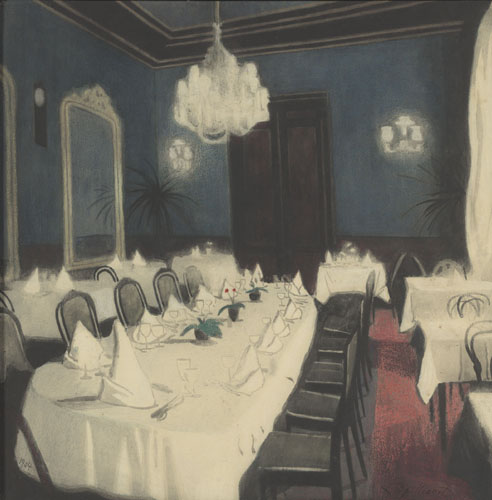For those persons (or non-person spambots) curious, the title of this blog does not come from Object Oriented Philosophy, of which I know little about.
Awhile ago, I wrote:
‘What is the literary equivalent of Léon Spillieart? He can make an empty dining room as haunting as anything I’ve ever seen.
It would be a lonesome, nocturnal kind of writing. Sometimes beautiful, others frightening, often both, and all the more so because one is never quite sure why it is beautiful or frightening. It sinuously works its ambiance into the viewer like a mosquito, with a sort of intravenous stealth whereby you do not realize you’ve been bitten. It would be a literature dominated by things – tables, doorways, staircases, windows, canals. The things outnumber the people, surround them with quiet force. It’s a panoply, a motionless rioting of objects. They are tumultuous in their stillness, threatening even. Objects have menace.’
Spilliaert’s work sometimes doles out absences like methadone for an addiction to the human form. The absences are not really absences though, because an absence is predicated on an eventual return. In some of his paintings, as in the dining room above, I find it impossible to imagine that anyone would ever return. The dining room is lit, the places are fully set, the chairs are pushed in exactly right – but no one will ever return. It’s not really an absence then, or even an emptiness. It’s a reversion to something that came before, the loss of artificial function. The only return is to whatever inscrutable function these objects (tables, tablecloths, chairs, chandeliers, gas-lamps, a hanging clock, a set of mirrors) regain whenever they are alone. I am reminded of what Rene Magritte wrote about a painting he made of a pair of red shoes, called The Red Model:
“The problem of the shoes demonstrates how easily the most frightful things can be made to appear completely harmless through the power of thoughtlessness. Thanks to the modele rouge one senses that the union of the human foot and a shoe is in fact based upon a monstrous custom.”
If the customs and functions humans often give to objects are monstrous and perverse, the reversion or regression of these articles to a state without that function is a normalizing one. What might be frightening then, is that this loss of given function presents a world without the possibility of humans coming back to impose those functions once more.
How could there be a literary equivalent to this, particularly one nearly as gorgeous and effective? The after-human world has been used up, despoiled of any former panache it may have had. An important distinction then, might be rather than an after-human world, a without-human world. A literary world temporally contiguous with the human world, but existing wholly without it. Not a world of bombed out classrooms and abandoned buildings, as those belong to the depleted and over-commercialized after-human realm. Instead of abandonment, we would be talking about neglect. The dining room never used, the storage closet never opened, an attic with a concealed entrance no one is aware of, etc. It would be dark, and quiet, the silence and stillness broken only by the endless amalgamating of dust, by time excreting its tiny, proliferating matter over everything like a skin of snow.
This kind of literature would almost lose its own function as well, in the process.
(Of course, there are now shoes being sold that look very much like this. And they are odd.)


